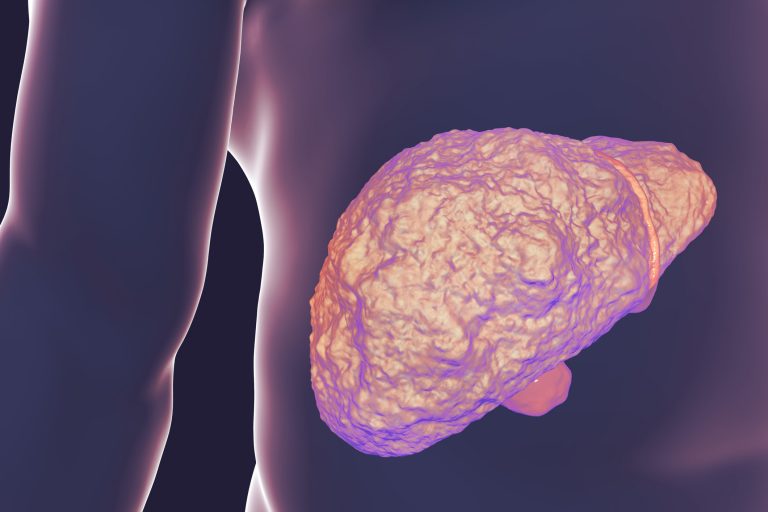
Researchers based at Wuhan University in China have discovered a mechanism that drives fatty liver disease. They also presented evidence about a small molecule that can target this mechanism, blocking the disorder’s progression in small and large animals. The team’s results suggest this may point to a promising new therapeutic target in nonalcoholic steatohepatitis (NASH), a form of fatty liver disease and a leading cause of cirrhosis and liver failure.
Both studies appeared in Science Translational Medicine this week. The lead author was Xiao-Jing Zhang of Wuhan University.
The incidence of nonalcoholic fatty liver disease (NAFLD) has risen over the last few decades due to chronic overnutrition and sedentary lifestyles, and the condition is now the most common liver disorder around the world. Approximately a quarter of patients with NAFLD will progress to NASH, which is more severe and also linked to heart disease and cancer.
These trends have made NASH very attractive to drug makers. At one point nearly every big pharma company had a NASH program of its own. But there have been a number of failures in the field, which has made it more daunting.
Although the mechanisms behind the progression from NAFLD to NASH remain unclear, recent studies have shown that lipotoxicity—the harmful accumulation of fatty molecules such as cholesterol in tissues—may be a major driver of inflammation and fibrosis in NASH.
In their first study, Xiao-Jing Zhang and colleagues systematically mapped how lipotoxicity affects the transcriptional activity of the liver in mice, pigs, nonhuman primates, and human liver samples.
Using multi-omics studies and multilayered validations across species, the researchers determined the arachidonate 12-lipoxygenase (ALOX12)–acetyl–coenzyme A (CoA) carboxylase 1 (ACC1) axis functions as a central driver of NASH progression.
Earlier studies had already pinpointed the involvement of ALOX12 in liver injuries such as hepatic ischemia reperfusion injury and Ccl4-triggered liver damage. In terms of metabolics, researchers showed that Alox12 depletion impaired glucose uptake in brown adipocytes and blunted adaptation to the cold in mice. It was also shown that ALOX12 expression correlates with the progression of various types of cancer, and that an enzymatic inhibitor of ALOX12, ML355,vcan effectively ameliorate thrombosis, platelet aggregation, and islet dysfunction.
This team discovered that expression of ALOX12 closely correlated with more severe NASH across all four species, and showed that the ALOX12 protein exacerbated NASH in mice and pigs by activating the enzyme ACC1.
In a second study, Zhang et al. showed that the small molecule IMA-1 prevented ALOX12 from interacting with ACC1 in mice and nonhuman primate models of NASH.
The anti-NASH efficacy of IMA-1 was comparable to ACC inhibition in both species. Protein docking simulations and following functional experiments suggested that the anti-NASH effects of IMA-1 were largely dependent on its direct binding to a pocket in ALOX12 proximal to its ACC1-interacting surface instead of inhibiting ALOX12 lipoxygenase activity.
IMA-1 treatment did not elicit hyperlipidemia, which is a known side effect of direct inhibition of ACC enzymatic activity, in both mice and macaques.
“Our findings provide proof of concept of the use of a new class of molecules… as next-generation drugs for the treatment of NASH,” Zhang et al. said.













